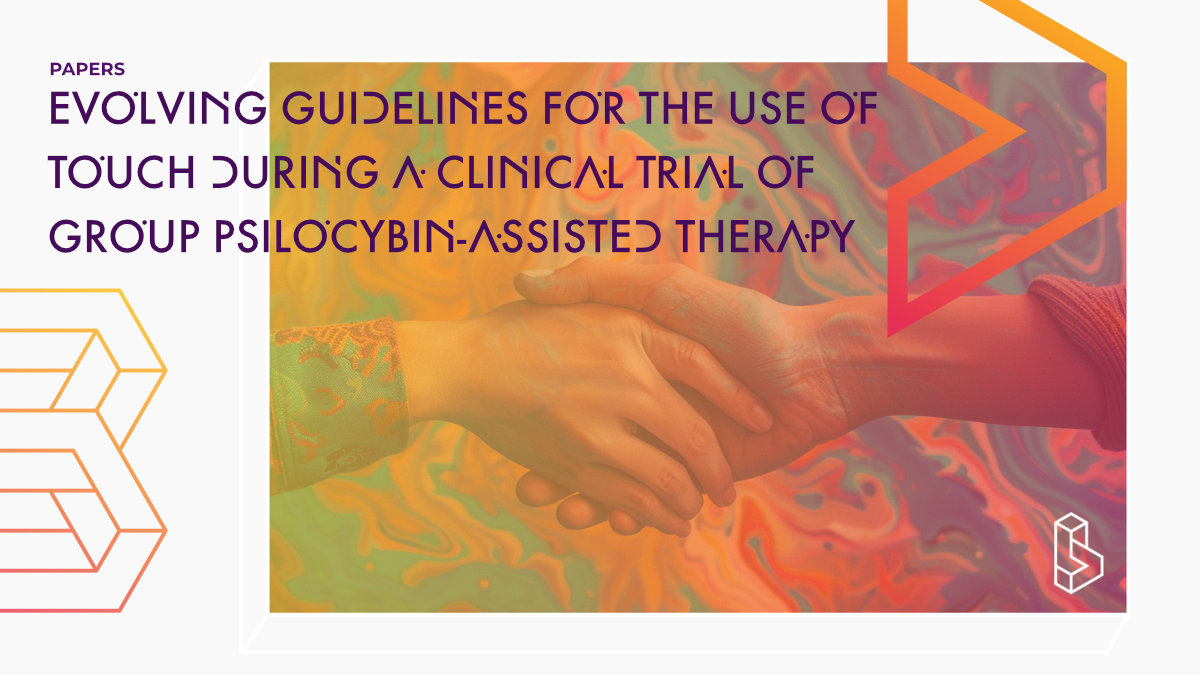This technical report (2024) describes the evolving guidelines for facilitator use of touch in a group retreat-based format of psilocybin-assisted therapy. The primary goal is to create a safe and supportive haptic experience during sessions, with a secondary goal of maintaining therapeutic boundaries and responding to participant experiences with empathy.
Abstract of Evolving Guidelines for the Use of Touch During a Clinical Trial of Group Psilocybin-Assisted Therapy
“For a new clinical trial testing a group retreat-based format of psilocybin-assisted therapy, our research team created an initial set of practice guidelines that aimed to describe facilitator use of touch in a way that is ethical, supportive, and minimizes harm. In our first three retreats, however, we had two unexpected experiences with touch that led us to iterate our initial guidelines into a new version of guidelines. In this Technical Report, we describe our evolving guidelines specifying acceptable practices for facilitator use of touch to ensure a safe, supportive, and therapeutic participant experience. Our primary goal with these guidelines is to create a haptic experience during the psilocybin session that reinforces the participants’ sense of safety and supports their own experience during the psilocybin session. Our secondary goal is to allow the facilitator team to notice and maintain therapeutic boundaries and to respond to participant experiences with empathy and openness in the context of those boundaries.”
Authors: Anthony Back, Susanna Myers, John Guy, Juliana Perez, Leslie Lazar Thorn & Bonnie McGregor
Summary of Evolving Guidelines for the Use of Touch During a Clinical Trial of Group Psilocybin-Assisted Therapy
Recent reports of practitioners using touch unethically caused harm to clients, mentees, patients, and study participants. Our research team created its own practice guidelines to ensure that practitioners use touch in a way that is ethical, supportive, and minimizes harm.
Touch is one of the first ways babies bond with their mothers, and humans can distinguish different emotions and meanings through touch with surprising accuracy.
Non-psychedelic therapy generally refrains from touching clients, but some psychedelic practitioners believe that touch used carefully can be supportive and even important.
Find this paper
https://doi.org/10.1089/psymed.2023.0069
Paywall | Google Scholar | Backup | 🕊
Cite this paper (APA)
Back, A., Myers, S., Guy, J., Perez, J., Lazar Thorn, L., & McGregor, B. (2024). Evolving Guidelines for the Use of Touch During a Clinical Trial of Group Psilocybin-Assisted Therapy. Psychedelic Medicine.
Study details
Compounds studied
Psilocybin
Institutes
Institutes associated with this publication
University of Washington in SeattleResearch into the therapeutic potential of psychedelics is underway at Washington State University.
Linked Clinical Trial
Psilocybin-Assisted Therapy for the Treatment of Cancer-Related Anxiety in Patients With Metastatic CancerThis phase I/II trial (n=56) will study the safety and side effects of psilocybin in combination with therapy for treating cancer-related anxiety in patients with metastatic cancer. Psilocybin is being studied to treat anxiety or depression in patients with advanced cancer. Participants will receive psilocybin orally and participate in group and individual therapy sessions.

